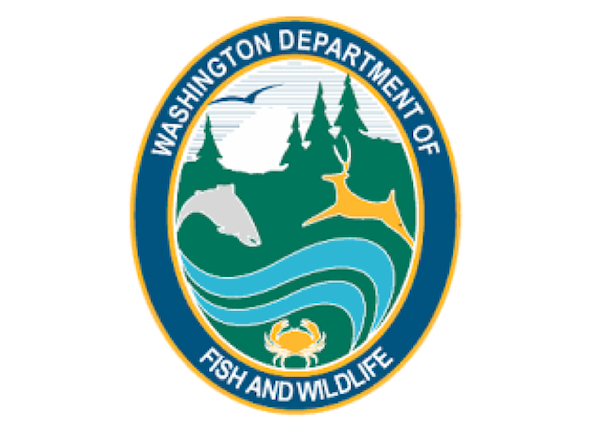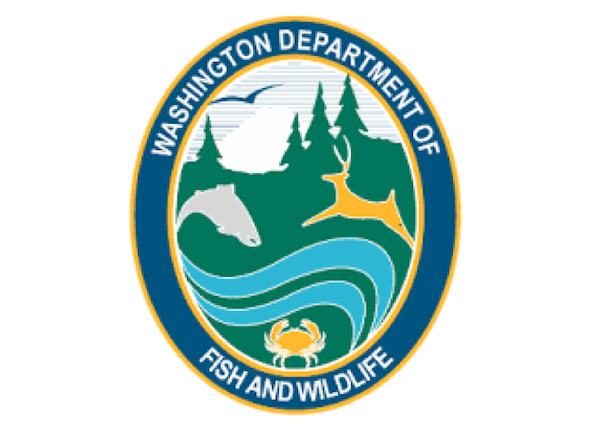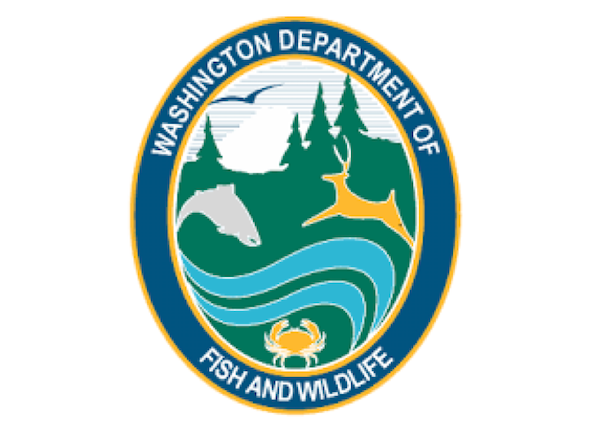2023 salmon forecasts released as annual season-setting process begins

by WA Department of Fish & Wildlife Staff
3-3-2023
Website
OLYMPIA – Washington fishery managers today unveiled forecasts for salmon returning to state waters in 2023, with some changes expected from 2022, including a predicted increase in many coho returns across the state.
Cooperatively developed by the Washington Department of Fish and Wildlife (WDFW) and tribal co-managers, these forecasts mark the launching point for the annual North of Falcon process to develop Washington's salmon fishing seasons. The forecasts cover expected returns of Chinook, coho, sockeye, pink, and chum salmon in Puget Sound, the Columbia River, and Washington's coastal areas.
The North of Falcon process includes numerous public meetings on salmon fisheries around Washington and opportunities to provide input through early April as WDFW works with tribal partners to develop tentative fishing seasons for the year. North of Falcon is just one part of a larger process that also includes federal regulators, other U.S. states, and Canada.
Though many forecasted returns of Chinook and coho to the Washington coast and Puget Sound are improved over 2022, fishery managers are carefully watching some salmon stocks that are predicted to return below historical averages and will set fisheries that ensure conservation objectives are met for salmon populations listed as threatened or endangered under the Endangered Species Act (ESA).
"Every year, our primary goal going into the North of Falcon process is to meet our targets for salmon conservation while still offering as much fishing opportunity as possible," said WDFW Director Kelly Susewind. "We continue to expand our recovery efforts in Washington, but we still have a lot of work to do, and that means some fishing may be impacted again in 2023."
The forecasts are based on the latest scientific modeling and a variety of data including environmental indicators such as ocean conditions, numbers of juvenile salmon that migrated to marine waters, and numbers of adult salmon that returned in past years.
The following are summaries of this year's forecasts, which vary by area:
Puget Sound
Coho returns to Puget Sound and surrounding rivers are forecast to be up in 2023 at about 760,000 wild and hatchery coho, above the 10-year average. Last year's forecast called for 666,648 returning coho. Returns are expected to be up relative to last year's forecasts for most Puget Sound rivers, with the notable exception of the Skagit River in North Puget Sound, where this year's forecast is down considerably from last year and will require more restrictive fishery measures to meet conservation objectives.
Pink salmon, which return to Puget Sound only in odd-numbered years, will also offer opportunities for anglers in 2023. The current total prediction for pinks returning throughout the region is about 3.95 million fish, very similar to the 3.77 million that ultimately returned in 2021.
Puget Sound Chinook are also expected to be up slightly with around 259,000 forecast to return in 2023, compared to 250,440 in 2022. The return of hatchery Chinook is expected to be around 10,000 fish higher than last year, while the return of natural-origin, or "wild," Chinook is expected to be down slightly, which is likely to impact fishing opportunity.
In 2022, WDFW and tribal co-managers submitted a 10-year Puget Sound Chinook Harvest Management Plan to provide long-term ESA coverage for Puget Sound fisheries. Late last month, the National Marine Fisheries Service notified WDFW and Puget Sound treaty tribes that the plan was sufficient to move forward with formal review under the ESA, a significant step.
While the overall 2023 Chinook return and progress on the harvest management plan are positive developments, WDFW's Intergovernmental Salmon Manager Kyle Adicks cautioned that managers will continue to keep an eye on limiting stocks and set fisheries appropriately.
"The outlook for Puget Sound Chinook is pretty similar to last year, meaning that we are still far from where we'd like to be in terms of recovery," Adicks said. "With the Chinook harvest management plan moving forward, we'll continue to use that as a guiding document to help set this year's fisheries and look forward to more progress on final approval, which should help streamline the North of Falcon process in future years."
Columbia River
About 84,800 Upper Columbia River summer Chinook are forecasted to return in 2023, representing about 120 percent of the 10-year average return and higher than last year's 78,500 fish.
The total return of fall Chinook to the Columbia River is expected to be similar to the recent 3-year returns. That includes about 272,400 "upriver bright" fall Chinook that are expected to return to areas of the Columbia River above Bonneville Dam, an increase from the 254,880 that returned in 2022.
Lower river hatchery Chinook stocks, also known as lower Columbia River "tules," are expected to be similar to the recent 3-year returns. These fish are listed as threatened under the ESA, and may affect fishing opportunities on the lower Columbia River, as happened in 2022. Bonneville Pool Hatchery "tule" Chinook destined to waters upstream of Bonneville Dam are forecasted to have another strong return with 136,100 fish, representing 149 percent of the 10-year average, but below last year's record return of 258,300 fish.
"We're considering several options to improve the predictability of fall Chinook fisheries and limit the in-season closures we've seen in the past several years," said Ryan Lothrop, Columbia River fisheries manager. "We'll be leaning heavily on public input to help determine what anglers would like to see in 2023."
Forecasts for Columbia River coho prior to fisheries occurring for the ocean and Columbia River are expected to see a slight improvement compared to the past two years' returns, with just over 886,000 early and late coho predicted to return in 2023. The 2023 forecast would be nearly double the 10-year average and an increase from the 2022 abundance of 685,000 coho.
Meanwhile, 234,500 sockeye are predicted to return to the Columbia in 2023, higher than last year's forecast but well below the actual return of nearly 665,000 fish. The endangered Snake River sockeye run is forecast to increase slightly to 2,600, compared to last year's return of 2,329 fish.
Washington coast and ocean waters
Coho returns on the Washington coast are expected to grow in 2023 to just over 519,329, up from the forecast of 454,693 fish a year ago. Coho returning to Willapa Bay and Grays Harbor are expected to be up overall this year, while the number of natural-origin Grays Harbor coho is expected to be very similar to 2022 returns.
About 77,100 lower Columbia River "tule" Chinook are expected to return this year, a reduction from the 2022 return of 87,542 fish. Approximately 213,200 total Columbia River tule Chinook, comprised of lower river and Bonneville Pool stocks, are forecast to return this year. These fish make up a sizeable portion of the recreational ocean fishery. Chinook returns to Willapa Bay and the Chehalis and Humptulips rivers are also expected to decline slightly in 2023.
Public meetings and feedback opportunities
Information about the salmon season-setting process, including public meeting schedules and materials, are available on WDFW's website.
Most WDFW public meetings will be held in virtual format again in 2023, with some held in virtual and in-person hybrid meetings. Members of the public can participate in these virtual meetings by calling in or logging on from a computer or smartphone. There will also be opportunities to submit public comment at these meetings, as well as an option for online comments at the North of Falcon webpage.
Upcoming meetings
Ocean fishing seasons
State, tribal, and federal fishery managers will meet with the Pacific Fishery Management Council (PFMC) March 5-10 to develop options for the year's commercial and recreational ocean Chinook and coho salmon fisheries. The PFMC establishes fishing seasons in ocean waters 3 to 200 miles off the Pacific coast.
Regional fishing seasons
The public is invited to join WDFW at online public meetings throughout March and into April to discuss coastal and regional fishery issues and preferences for Puget Sound and Columbia River. Meetings offer opportunities for public comment, which fisheries managers use to help inform non-tribal fishing seasons.
Final PFMC
The PFMC is expected to adopt final ocean fishing seasons and regional harvest levels for the western seaboard at meetings on April 2-7. State and tribal co-managers will set a tentative 2023 salmon fisheries package for Washington's inside waters.
The Washington Department of Fish and Wildlife works to preserve, protect, and perpetuate fish, wildlife and ecosystems while providing sustainable fish, wildlife, and recreational and commercial opportunities.
More Reports

2-28-2023
OLYMPIA – The Washington Department of Fish and Wildlife (WDFW) announced today plans for the 2023 halibut fishing season, which...... Read More
WA Department of Fish & Wildlife Reports
for Monday, February 27th, 2023
• Coastal razor clam digging at Mocrocks starts Friday, March 3, Copalis also opens Saturday, March 4
• Coastal recreational bottomfishing opens Saturday, March 11 with new rockfish regulations
